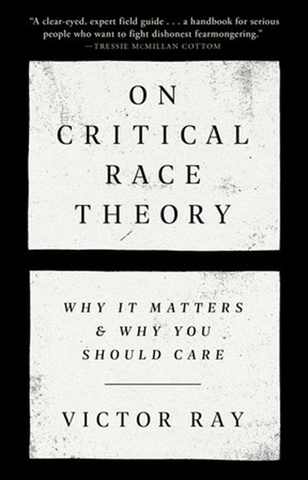
Professor Ray’s path to becoming an associate professor at the University of Iowa and a fellow of the Kennedy School at Harvard University was indirect. “I followed what interested me, even if risky. Some paths worked, most didn’t,” he says. His guiding principle was to apply for everything because “no one knows your batting average.”
After high school, he moved to New York City to pursue classical ballet and paid his dues waiting tables. He enrolled in community college, which went well, and transferred to Vassar College. After graduation, he was accepted to graduate school at Duke University, studying under Professor Eduardo Bonilla-Silva.
After earning his PhD at Duke University, Professor Ray started teaching at the University of Tennessee in Knoxville from 2014 to 2019. He says that Tennessee was one place where the moral panic swirling around Critical Race Theory was pilot tested. White nationalists were prominent speakers at the university, and the legislature defunded the University’s diversity program. He wrote his book in reaction to the moral panic surrounding the theory that has spread nationwide.
In addition to his research, Professor Ray had always written and presented work designed for a wider audience. He felt his book could bridge the gap between academic research on Critical Race Theory and public perceptions of it. Continuing his strategy of “trying everything,” the book project was unplanned. “I tweeted a joke about writing a book on Critical Race Theory and a publisher said, yes!” His wife, Professor Louise Seamster, had told him, “You know that tweet is going to work.” And it did.
The book adds context to a discussion that started as a moral panic. The fierce political backlash to an academic theory seemed irrational to him, but it also served to make many people curious about it. A book written for a general audience could seize this moment of public attention to explain the principles of Critical Race Theory. Understanding the theory can help us understand the current political backlash to antiracist activism: including attacks on the theory itself.
His book uses a personal story to introduce the large body of evidence verifying the impact of systemic racism. Systemic racism is the idea that society can unfairly restrict the opportunities and behavior of people of color without anyone intending to discriminate against them.

As Victor explains, when he was a toddler, his uncle took him to a parade and lifted him onto his shoulders to see better. Someone in the crowd assumed Victor had been abducted by his darker-skinned uncle. The police were called, and his uncle had to explain that he was family, not a kidnapper. A similar incident occurred when Victor was 10, playing in the yard with his dad, and the police were called. These aren’t isolated anecdotes. People of color are often called upon to justify innocent behavior, knowing that the police are unlikely to believe them.
Professor Ray sees a historical equilibrium of white dominance, with periods of progress followed by backlash and repression. It is more comfortable to think of a steady march toward racial equality in the United States, but every era of racial progress has been followed by a racial backlash. The repressive Jim Crow era followed the Civil War; resegregation followed the civil rights movement; and the fierce backlash to Black Lives Matter came quickly after the movement gained wide support. There are people fighting for racial equality and people fighting for white domination.
Dr. Martin Luther King Jr. said that the arc of history is long, but it bends toward justice. How long? In a less optimistic moment, Dr. King wrote that time is neutral. The social theorist, Derrick Bell, proposed the idea that racial progress happens when it is in the interest of white people as well as black people. Perhaps that points to a way forward. Professor Ray plans more public writing and has a contract for a scholarly book on racial issues in organizations, which has become a focus of his research.
Professor Ray enjoys teaching and interacting with students at the University of Iowa. He has also devoted considerable thought to teaching sensitive topics that many students find difficult to approach. First, he welcomes students to disagree. Then he asks them to consider the research evidence. If he can make the lessons from the data clear, it helps students to reconsider commonly accepted attitudes that cause conflict.
Professor Ray feels that students respond well when they understand that he believes in the importance of his subject. He says students often realize that there are important things they don’t know, because those lessons haven’t been taught. The challenge of living in an increasingly diverse society means that we all benefit from communicating effectively about race.
In a diverse society, no one can reach their potential without successfully communicating with people of different races, he says. The current push for restrictions on teaching about race harms students’ ability to succeed in the world. “Why would we want to deprive students of knowledge that will help them?”